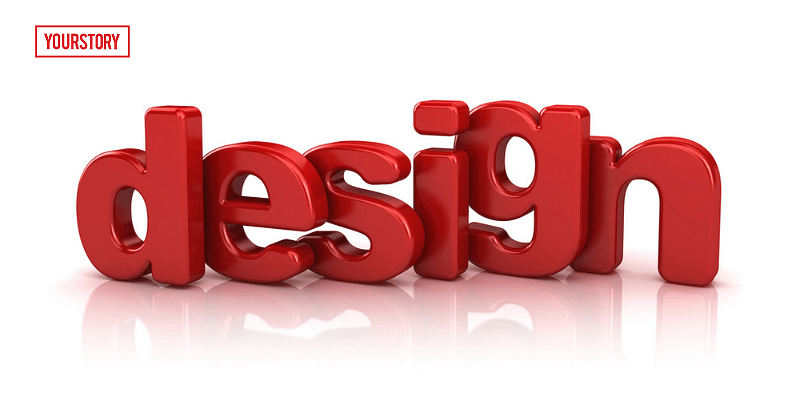Just off the busy streets of Kalkaji in Delhi, lies an impossibly quiet oasis. When I first stepped into the main hall of the Lotus temple, I was taken in by how peaceful and calm the place was, even though it was occupied by the same set of people who were raucous just a few meters away. What powers did the architecture hold that it could extract the quiet within the most boisterous of us?
Translating emotional intelligence, physically
Have you wondered why places of worship have historically always been the epitome of grandeur and wonder throughout human civilization? Why did Michelangelo spend four years straining his neck to create a wonder on a ceiling? And why did Shah Jahan empty his coffers to create a marble tomb?
If you are looking to find an answer, look in the direction of how you feel when you are under the spell of such exquisiteness and such scale. Beyond the obvious awe and admiration, you will find a feeling of diminutiveness, much how a peasant would feel in front of a king. That is precisely how these structures were designed to make you feel. Small and insignificant in front of much greater power.
Apart from throwing you into a web of exploring how we have been manipulated, what I’m pointing to is how objects and buildings can affect our emotional quotient when designed well.
The root understanding of it is how people respond and react emotionally to given stimuli. While each of us has a unique disposition we also have universal humanity that governs us all.
Our job as designers is to be able to experience life through another pair of shoes, while being comfortably grounded in one’s own, and while some of it can be learned, a lot of it is intuition and being emotionally intelligent to the world around us. All design is after all catering to humans and trying to improve our well-being.
Designing for emotions and not just for logic
Humanity has long been obsessed with the idea of well-being. Lifestyles have improved without doubt but we must stress as to what constitutes wellbeing. I will narrow it here to consider our emotional well-being because ultimately, that is where it all rests.
We are highly emotional creatures that are trying to make sense of the world rationally. But it is through our emotions that we govern ourselves and make decisions.
The ‘right feeling’ often triumphs over logical conclusions and this is also possibly why a lot of us are often guilty for falling for the wrong partners. Our reptilian brain is still what governs us in spite of having figured out the recipe for caramel custard.
We know that any amount of things do not guarantee a mental state of peace, most likely the largest component of wellbeing. The equanimity of being present with one’s full awareness is hard to come by when we are essentially monkeys.
Our cortex is governed by mostly irrational fears which cause anxiety, essentially plummeting our awareness into the future or hammering it to the past, making it hard to be present with one’s immediate self.
What if I were to suggest that our wellbeing will improve dramatically if we were more aware of our present? The joy of the first bite not fading well into the meal because it is still the first time you’re tasting it, albeit with familiarity, and you are now making friends with the most delicate of flavourings and at the same time also acutely aware of a note being hit perfectly.
Engaging a full spectrum of human emotions
Design must endeavour to draw us into the moment, in order to connect with us. To reach through to someone’s emotions, one must connect with all the senses. There must be a pleasing tactile quality to the object.
The softness of diligently sanded wood, the sweet sound of the perfect click as a door closes, the smooth movement of drawers on a wooden rail, the eye-catching grain of wood that you get lost in, the smell of honey in the beeswax.
The support provided by a well-crafted chair is as emotional as it is tactile and the two are deeply connected.
Physical form can be made alluring, even intoxicating, and all neurons in the brain snap to submit to our inner lizard.
All these have the ability to draw us into discovering more of ourselves in the present thereby increasing wellbeing. It is better to be surrounded by fewer notes of music than by scores of noise.
It also, and primarily for that matter, must serve the function that it is meant for, because it is then that we start to trust the object with our emotions. A washing machine as beautiful as the setting sun would not pass muster if it could not wash clothes. (Louis Sullivan has a famous quote about functionality) I would like to draw the difference between utilitarian and functional. Utility ends when the purpose is met.
Function however goes beyond the utility because there emerge various facets when the design is applied to tie them all together. Thereby, breathing life into its interconnectedness, as a soul. Recognising this in something is compelling enough to draw you into the moment. The real test is when it can be done repeatedly. Those to me are musical objects, and they are more compelling than just their appearance because they are alive.
Take the case of furnishing a home. What most people consider as dead pieces are in effect alive objects that we continually live with years on end.
We sleep, eat, sit, and interact with them in multiple ways and yet we somehow live under the illusion that these are mere objects with little or no bearing on our emotional wellbeing.
Empathising through design
We must look at how an object would interact not just by itself, but also how it interacts with other objects in its vicinity. We integrate our spaces with the way we interact with them. The furniture is not only occupying space but it’s also occupying time.
The ability of a chair to lead an engaging conversation is as rooted in its temporal interactions as it is to do with its spatial presence. It can allow for just that little bit of involvement in the way you sit so your stories find it easier to leave your tongue.
While the relaxed lounger can induce an internal retirement. The ability to affect us in a temporal sense is what makes something come alive, and that has an affect on our emotions.
Good design is a celebration. There is an absolute joy in interacting with something well designed. The perfectly engineered car to the effortless comfort of an ergonomic chair.
The wonderment of exquisitely carpentry and the enduring practicality of a table passed down generations; or the simplicity of an operation because someone has lived through the process of making its simplicity the most important thing that they had to do.
Whether it’s the ease of dragging something on your desktop into the trash, or the ability to find the ticket counter with ease, or simply the intuitiveness of a drawer pull. It is the small things that need to be celebrated, the big things find their place in any case.
Along with the celebration is also the emotional support that is provided by design so that you can worry about the real things at hand. These are all emotional bearings that good design can extend into our lives, and make the world around us a lot more alive than we imagine it to be.
(Disclaimer: The views and opinions expressed in this article are those of the author and do not necessarily reflect the views of YourStory.)










